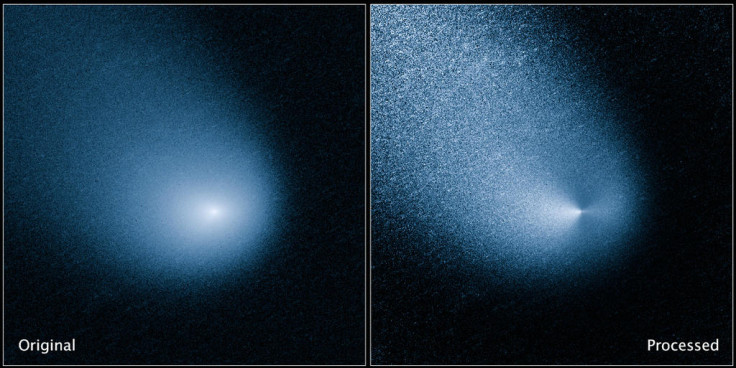Comet Siding Spring To Have 120,000mph Near Miss With Mars Today
Mile-wide comet believed to be debris from the creation of the Solar System, 4.5 billion years ago

A mile-wide comet will fly past Mars later this today at 120,000 miles per hour, astronomers said.
The comet, called Siding Spring (C/2013 A1), will pass Mars at a distance of 88,000 miles, less than half the distance between the Moon and Earth, at 56km per second.
Named after the observatory in Australia where it was first spotted last year, experts believe it will come closest to the Red Planet at 6.27pm GMT.
Astronomers believe the comet could provide important clues about the Solar System's birth billions of years ago in the Oort Cloud, which is on its fringes.
Dr Michael Brown of Monash University told the Guardian: "It has probably been left in the outer part of the solar system in a cold, frozen orbit for a very long time before something disturbed its orbit and pushed it into our neck of the solar system."
"It has probably never been so close to the sun in all that time. It's essentially a refrigerator of pristine parts of the creation of the solar system. The particles it gives off are effectively opening up the door of the fridge so we can see what the solar system was like 4.5 billion years ago."
The comet, which is travelling at 122,400mph, has taken a million years to reach Mars, and will not make another orbit around the Sun for another million years.
The fly-by will not be visible to the naked eye from Earth, but might be visible through a powerful telescope.
Scientists have equipment on Mars to record the rare event.
The Mars Exploration Rovers Opportunity and Curiosity will take pictures of the comet as it skims past Mars, sending them back to Earth.
Mars Reconnaissance Orbiter, MAVEN and Mars Odyssey, which circle the planet, have been moved to the far side of Mars to avoid debris from the comet damagign them as it hurtles past, but scientists believe they will be able to capture significant data about the rare event.
"It will give off a lot of dust which can do a hell of a lot of damage if it hits a spacecraft at 50km a second, so hopefully Nasa will be able to protect them," Dr Brown said.
© Copyright IBTimes 2024. All rights reserved.






